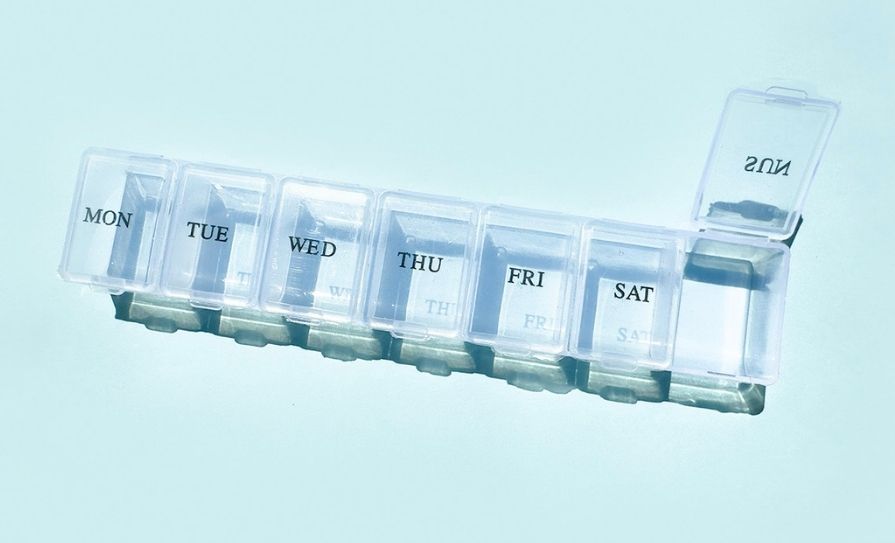Dr Máire Milner looks at a common condition that has a mixed clinical picture and can sometimes be misdiagnosed as OAB
Urinary incontinence (UI) in women is very common, increasing with age so that over 50 per cent have symptoms by age 65. As many as one-in-three women are incontinent of urine postnatally, and many runners and elite athletes have a problem. Typically, UI occurs during exertion, sneezing or coughing; however in practise, bladder neck weakness can be difficult to distinguish from overactive bladder (OAB), and many women have a mixed picture. Operations for UI have been in the news recently, and it is perhaps timely to review basic principles, with a look at what can be done before medical specialist referral is sought.
The female pelvic floor is vulnerable because of its design. The urethra is very short, and the sphincter mechanism depends on the proximal 1cm being above the muscle floor, with higher intra-abdominal pressures keeping it closed. Damage to it with organ descent/prolapse affects this pressure differential. In childbirth, whether actual perineal tearing occurs or not, the pelvic floor experiences stretching, compression, muscle/fascia rupture, and denervation. Dr Maria Gyhagen, a urogynaecologist using Swedish population data, spoke to the Continence Federation of Ireland recently on ‘Long-term Consequences of Childbirth on the Pelvic Floor’. UI prevalence in 14,335 Swedish women 40-to-64 years, 20 years after either no delivery, one Caesarean (CS), or one vaginal delivery (VD) were 20.1, 30.1, and 43.0 per cent, respectively. She concluded that CS compared to VD was associated with a 30 per cent reduction in SUI, and a 35-to-52 per cent reduction in more severe grades (p<0.0001). Ageing was associated with an increase in all three groups.
CS for all women is neither practicable nor desirable, but this important data helps understand how events in women’s lives shape the development of UI, ie, its pathogenesis.
Symptomatic pelvic organ prolapse (sPOP) is a common concomitant of UI. Gyhagen reported a higher prevalence of sPOP after VD compared to CS: Both BMI and birth weight were also each significantly correlated to risk of developing sPOP. Women with sPOP had an almost trebling of UI prevalence after VD compared with CS.
Menopause with oestrogen (E2) deficiency plays a part in pelvic health, with E2 receptors in the bladder neck and vaginal mucosa. While local E2 may alleviate OAB and reduce UTI incidence, there is no evidence that HRT improves incontinence or sPOP.
Obesity is the second-commonest modifiable risk factor for cardiovascular disease after smoking, with huge impact on healthcare costs and risk of premature death. It is a well-documented predictor of SUI and OAB, and weight loss may result in improvement or resolution of both. Obesity is also associated with sPOP, certainly through increasing intra-abdominal pressures, but also possibly via a metabolic effect. Weight loss is associated with improved quality of life (QOL), and it may allow many women to avoid surgery: Obesity in any case increases operating time and risk of surgical complications.
Constipation is a common contributor to prolapse and UI, including OAB, yet is poorly recognised. Many women do not acknowledge to themselves that they are constipated, as most only consider frequency of bowel movements: Thorough questioning is required to elicit symptoms of straining, hard stools and a sensation of incomplete defecation.
The next modifiable risk factor is fluids. Many women reduce fluids to try to reduce wetting episodes, but this is generally counter-productive as it worsens constipation, and concentrated urine is more irritant to an overactive bladder. Ensuring the woman drinks a normal quantity of fluids — typically 1.5 to 2 litres daily — is important. But equally, quality of fluids matters, and water is best (and free). Caffeine is a stimulant, and many women will notice improvements by reducing their intake. Artificial sweeteners, carbonated drinks — even sparking water — will irritate bladders too, as will chocolate, citrus fruits and juices, and alcohol.
When deciding on a treatment plan, it is important to clarify the type of incontinence. This can be ascertained subjectively in the vast majority, and urodynamics is rarely required.
Where there are features of OAB, the quickest and most dramatic improvements are made by tackling this first. First-line management is behavioural advice on fluids, constipation, and urge suppression techniques: Essentially, the woman contracts her pelvic floor when she starts to feel urgency. She can be educated regarding her nervous system: A distraction technique, ie, mental arithmetic, or using her feet musculature —‘standing on tippy-toes’ — to take advantage of the common sacral nerve root supply is useful.
Referral to a pelvic health physiotherapist or nurse specialist in the first instance is ideal for bladder re-education. Significant progress can often be seen in two weeks with OAB: For those who don’t improve within six weeks, a trial of medication for OAB is warranted. Anticholinergics are typically used first-line with very good effect, notwithstanding their side-effect profiles, particularly in the elderly. Counselling regarding sedation, dry mouth, and ironically, constipation, will help with continuance rates. The Beta-3 agonist Mirabegron causes less dry mouth, but it can increase blood pressure and can be constipating.
There are many misconceptions around what physiotherapists do for UI. ‘It’s just pelvic floor exercises (PFEs), right?’ Wrong! A physiotherapist will look at the spine, hips, feet, diaphragm, rib cage, breathing pattern, scar tissue on the abdomen or perineum, bowel habit, muscle function of abdominals, gluteals, and adductors. Assessing how the woman manages a rise in intra-abdominal pressure is pivotal, and vaginal assessment will determine pelvic floor function. Only half of women will do PFEs correctly based on verbal instruction; 25 per cent will do a Valsalva manoeuvre: The best technique is to ask her to pretend to hold in flatulence. So just telling someone to do pelvic floor exercises will not suffice. UI is not anyway just a ‘brute-force/pressures’ issue, ie, damage/scarring to muscles also play a part.
A large percentage of women have an overactive pelvic floor, one that doesn’t relax properly, which needs to ‘down-train’ before work on strengthening/ improving function can begin. Specificity, co-ordination and timing all need to be addressed, and progression to function is imperative.
Other adjuncts the physiotherapist may use include manual therapy, biofeedback, real-time ultrasound, electrical stimulation, and vaginal weights. Physiotherapy is not a quick-fix, and may take three-to-six months.
Successive generations of surgery have evolved over the last 40 years to treat UI+/-sPOP. Vaginal wall repair, abdominal and vaginal approaches to lifting the bladder neck or vagina via stitches, tapes, or slings, and most recently mesh under the bladder, have all been used. Many women are improved or cured: However long-term efficacies are unclear, and success rates decrease steeply with further surgery. Moreover, surgery carries risks of anaesthesia, haemorrhage, thromboembolism and infection, as well as urinary retention, mesh and tape erosion. There is a significant learning curve with any specific procedure, and how many procedures a surgeon is doing increases his/her success rate, with a concomitant fall in complications. Bed availability is always in crisis in Ireland and the UK, making all these issues highly relevant.
The situation is complicated by the fact that many continent women may be rendered wet de novo once prolapse has been reduced/cured, and the bladder repositioned. Also, while in theory surgery is aimed at women with bladder neck weakness only, many women have a degree of OAB, or develop it de novo following surgery for UI.
Vaginal pessaries, whether traditional rings, or continence pessaries, ie, Contiform can be useful in the management of UI that doesn’t respond to active therapy. The aim is to restore the upper urethra to above the level of the pelvic floor, but evidence for significant effect on UI is unclear. Some women are comfortable with removing, washing and reinserting pessaries themselves.
Periurethral bulking agents are used, but their effect is modest, repeat injections are required, and complications, ie, infection and vaginal erosion, are common.
Duloxetine, an antidepressant with modest effects on urethral tone, is now only used with caution because of concerns re suicidality.
It can be seen that available options are narrowing for the common problem that is SI: An effective, non-invasive tool would be hugely welcome. The concept of pelvic floor support being provided by a garment, whereby additional positive pressure is transmitted via the perineum, is very new. Research on ‘shaper’ underwear in Japan demonstrated bladder neck elevation on MRI in women with SUI, and subsequent work showed a comparable effect to PFEs. In 2013, an EVB garment was custom designed by an Irish engineer for female runners with urinary leakage. Its varying elasticity provides compression to gluteal muscles and thighs and results in uplift to pelvic floor muscles. The central section is suspended from a high waistband, resulting in a hammock or sling effect. The mix, panelling and layering of the fabrics act together to encourage the pelvis into a neutral, aligned position and this improves posture: This was confirmed in work last year in UCD’s Department of Bioengineering. The EVB garment is in wide usage now by urogynaecologists, physiotherapists and urologists, and the experience is that significant benefit is derived by at least 50 per cent of women.
Since 2014, three double-blind crossover studies into EVB garments in exercising women at RCSI, UCD, and TCD showed consistent reductions in SUI. Conclusions are limited, as the largest number of women studied was 34. If confirmatory evidence is forthcoming from larger studies, the benefit offered to the wider female population with SUI by a low-cost, readily-available tool would be enormous.
Assisting women to lose weight, helping them with bowel and bladder habits in association with their practice nurse and physiotherapist, and managing any other condition, ie, COPD, will all improve UI and probably associated sPOP. There are few ‘quick-fixes’ in medicine, especially if one is trying to modify behaviours and lifestyle. There is never a substitute for taking a good history, spending time and travelling the journey with her.







